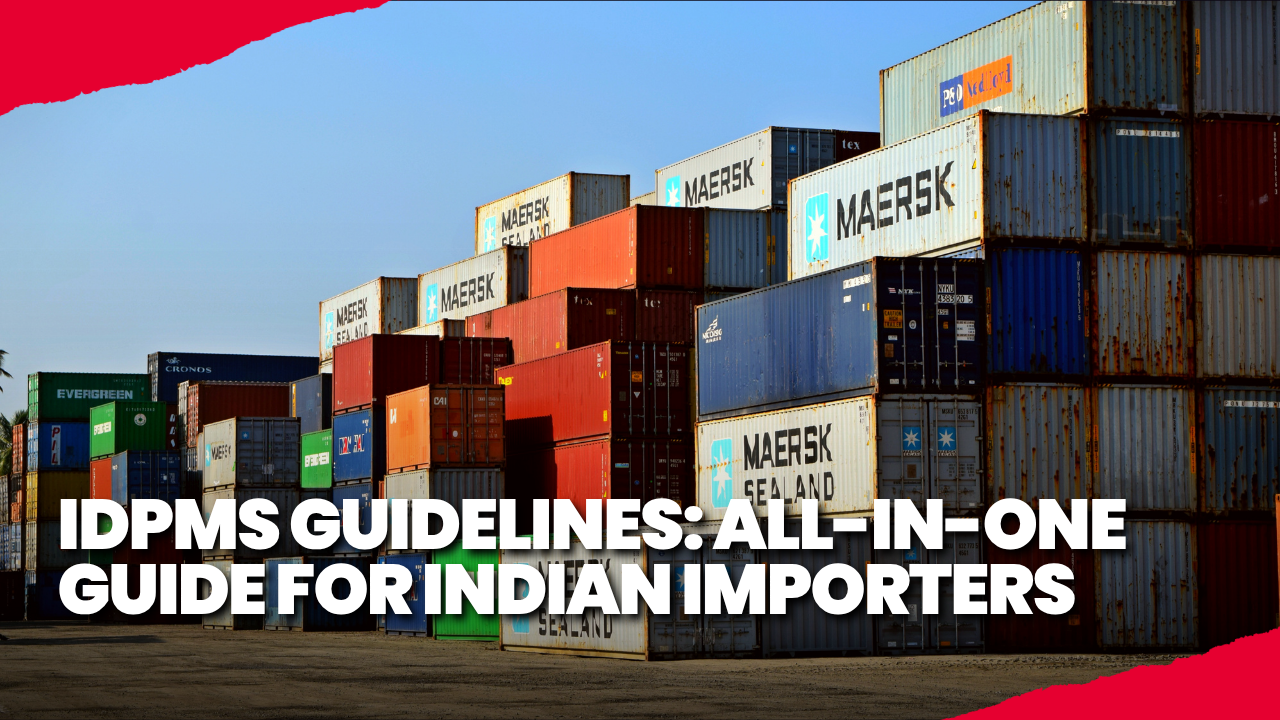
The Import Data Processing and Monitoring System (IDPMS) is one of the most important things the Reserve Bank of India (RBI) is doing to make import activities easier and more visible. The IDPMS portal was launched in 2016 and is a single location for all financial actions connected to imports to be clear, in line with rules, and quick.
A Full Overview of the IDPMS Full Form and Its Function
We can say that IDPMS full form stands for Import Data Processing and Monitoring System in full. This method was made to address the problems that came up when importing data had to be processed manually, which took a long time and wasn’t always correct. By digitizing the process, the IDPMS site makes it possible to watch import payments in an instant, making sure that the flow of foreign currency matches the delivery of goods.
How Does IDPMS Help with Exports?
While the IDPMS portal’s main purpose is to keep you updated on deals involving imports, it also helps the export industry by making international trade more financially clear and in line with rules.
Importers who do their jobs well through the IDPMS portal keep the flow of foreign currency smooth and build trust in the international trade market.
This helps exporters who count on on-time payments and clear trade practices. A good IDPMS portal also helps banks and officials keep trade data balanced, which is important for making policy decisions and keeping India’s trade reputation.
Key Features of the IDPMS Portal
Integration with Customs and Banks
It works with banks and customs. Customs and Authorized Dealer (AD) banks submit data to the IDPMS portal, which makes it easy to keep track of trade activities.
Continuous monitoring
Importers and banks may track the progress of import payments and shipments immediately, which helps to avoid mistakes and ensures compliance is met on time.
Reporting that is completely automated
The method makes it possible to report information without making any mistakes, which saves time and money.
Enforcement of Compliance
The IDPMS platform makes sure that RBI rules are followed by connecting payment data with import documents. This lowers the risks of fraud and not following the rules.
Also Read This: What Makes Indian Corrugated Boxes a Great Export Choice
Practical Implementation Strategies
Importers should think about the following ways to make the most of the IDPMS portal.
- To avoid any delays in executing your transaction, make sure to send the necessary documentation, such as Bills of Entry, as soon as possible.
- Checking the IDPMS portal for transaction status updates on a regular basis can help you spot and fix inconsistencies quickly.
- To ensure that all transactions are appropriately recorded and that any difficulties are immediately handled, it is important to collaborate with banks and to keep constant contact with your AD bank.
- To make sure you’re always following the rules, keep up with the latest news and instructions that the RBI issues about the IDPMS site.
What are the benefits of the IDPMS Portal?
- The IDPMS site improves communication between importers, banks, and regulatory officials by giving them a central place to keep track of trade activities.
- Automating data processing reduces the work that needs to be done manually, which speeds up transaction handling and lowers the risk of mistakes.
- Continuous monitoring helps find problems quickly, which lowers the chance of losing revenue because of scams or not following the rules.
- The system takes care of all import transactions to make sure they follow RBI requirements.
What Are The Common Problems And How To Fix Them
- Transaction delays can happen as a result of data discrepancies, particularly when there are discrepancies between payment data and import documents. Regular bank accounting and quick contact with banks can help solve this problem.
- Transaction processing may be delayed due to infrequent technical difficulties experienced by users of the IDPMS portal. Having backup plans and staying in touch with technology support can help you get through these kinds of problems.
- Importers may not fully understand the IDPMS portal’s features and needs. This gap in information can be filled by holding regular training and awareness sessions.
Wrapping It Up
The IDPMS portal is a big step toward making India’s import deals more digital and smooth. Importers can make sure they are following the rules, improve efficiency, and lower the risks that come with international trade by understanding the IDPMS in full, how it works, and how to put it into action. Using the IDPMS portal in a smart and informed way will help trade processes run more easily and in line with regulations.
FAQs
By combining data from customs and banks, the IDPMS portal aims to keep track of and speed up trade deals while also making sure they are in line with RBI rules.
Authorized Dealer (AD) banks and customs authorities are mostly in charge of keeping the IDPMS portal up to date and letting people access its data. Importers can check on the progress of their transactions through their banks.
If you don’t follow the rules, you could face fines of up to three times the amount involved, future limits on imports, banks refusing to handle transactions, IEC cancellation, and even investigations under the Foreign Exchange Management Act (FEMA).
Also Checkout Our YouTube Channel: @limeinstituteofexportimport






